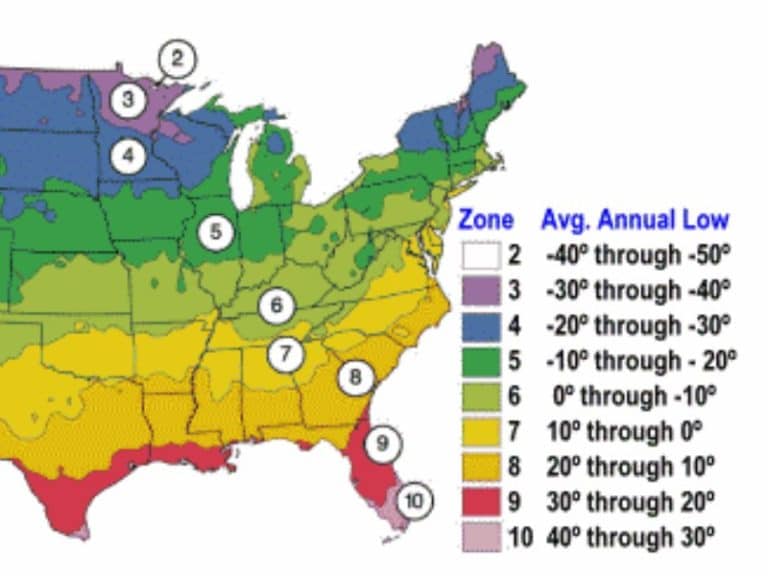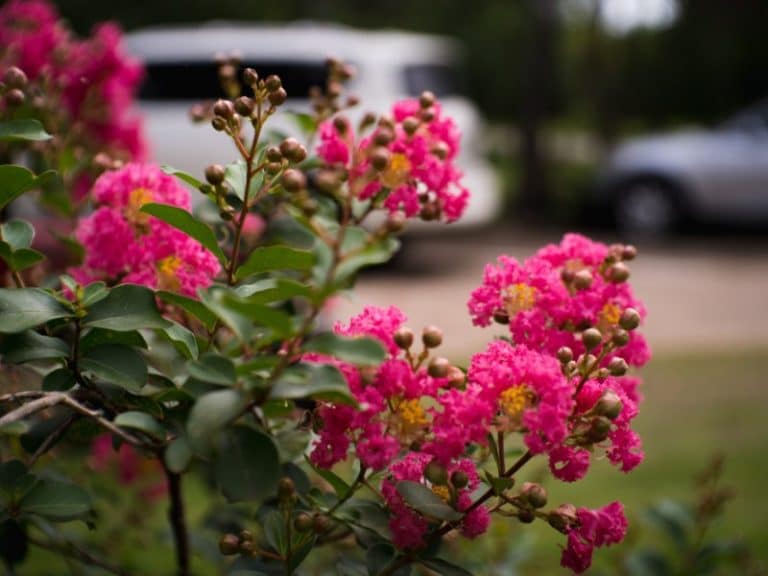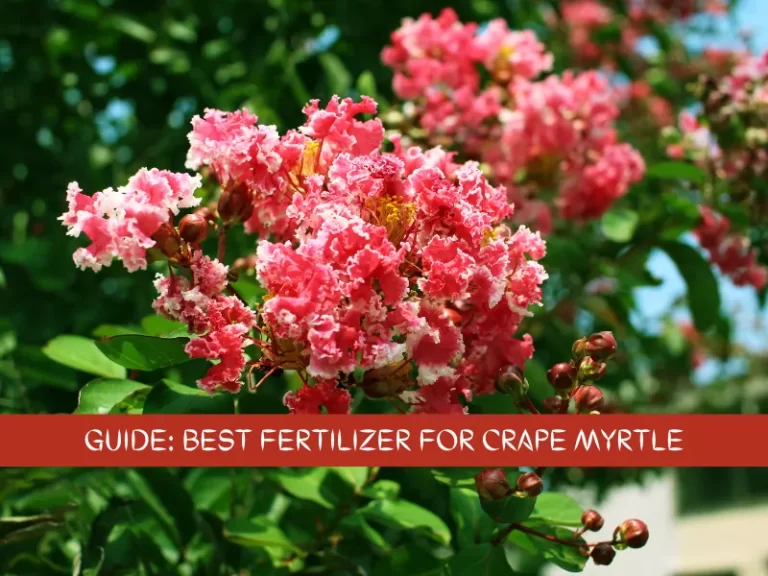Pruning Crape Myrtles Correctly: When is it Too Late?
For a tree that’s supposed to be so beautiful, a badly pruned crape myrtle is truly a sad sight. Bad pruning leaves your crape myrtle hedge looking bare, out of shape, ugly and unhealthy. Worse still, the tree is exposed to pests and diseases. Bring out your sharpest pruning saws; we’ll show you hacks to correct pruning methods.
It is recommended to prune crape myrtle trees before new growth emerges so that new blooms can appear on new wood. Prune when the weather warms up toward spring in the direction you want the tree to grow. Trim the lower branches emerging from the main stem, so new branches appear about 8 feet from the ground.
You have until the onset of spring to prune crape myrtle.
What month do you prune crepe myrtles?
The best time to prune crape myrtle is from late February-early March (late winter-early spring) before new growth emerges in the spring. Crepe myrtle leaves usually fall in the winter as the tree goes dormant. With the exposed branches, you get a better view of the shape and structure of the tree, thus allowing for correct pruning of the inner branches for improved air circulation.
Note: You can also lightly prune your crepe myrtle throughout the year to remove dead and diseased twigs.
How to prune the tree
Crape myrtle trees only require light pruning. To correctly prune your crape myrtle, consider the following:
- Which tools to use
- How to sanitize the pruning tools
- How to prune for shape training
- How to prune dead and diseased branches
- How to prune for better air circulation
- How to prune unorthodox branches
Here’s how to prune your crape myrtle trees:
1. Select proper pruning tools
The tools you need to prune your crape myrtle tree correctly include hand pruners, loppers, and pole pruners. Hand pruners are for the smaller branches no more than 0.5 inches wide. Meanwhile, loppers are for cutting medium-sized branches 0.5-1.5 inches thick. Finally, pole pruners are for cutting wider branches thicker than 1.5 inches.
Note: You can use a pruning saw as an alternative to pole pruners.
2. Sanitize the pruning equipment
Crape myrtles become prone to diseases during pruning. Sanitizing your equipment minimizes the chances of any disease spreading. The easiest way to sanitize the equipment is by dipping the pruning instruments’ blades in an isopropyl alcohol/ethanol solution.
3. Prune the crape myrtle into shape
The best way to prune crape myrtle is trimming most of the trunks at ground level, only leaving behind 3-5 of the healthiest trunks. Also, ensure you cut any suckers growing from the base of the plant, regardless of the time of the year. Cutting the suckers and lateral branches growing on the lower trunk raises the canopy and trains the crepe myrtle into a tree shape.
4. Prune dead and diseased twigs
When pruning crape myrtle, you should also aim for the diseased, dying, and dead branches. It lowers the plant’s vulnerability to pests and diseases. Meanwhile, trim off spent blooms in June if you want to trigger a second bloom cycle. For most crepe myrtle varieties, a single bloom cycle can last up to 120 days.
5. Thin out the crape myrtle
Crape myrtle with poor air circulation is usually more susceptible to powdery mildew disease during the summer.
To prune for improved air circulation, cut back smaller branches back to where they meet other branches. This helps thin out the branches for better air circulation within the crape myrtle’s canopy.
6. Prune off unorthodox branches
If there are any crossing branches on your crepe myrtle, ensure you cut them back. Such branches usually end up touching each other, resulting in rubbing that causes open wounds that subsequently facilitate the spread of diseases and pests.
You should also trim off any unorthodox branches growing downwards or inwards towards the center of the canopy. Crape myrtle trees look best aesthetically when all the branches grow upwards and outwards in a natural tree shape from the center of the canopy.
7. Avoid ‘crape murder.’
‘Crape murder’ is a term coined by the landscaping community to refer to the excessive pruning of crape myrtle that destroys the natural structure and shape of the tree. Crepe murder occurs when you prune your crepe myrtle so far back that only large branches are left.
Moreover, the branches that sprout from such heavy cuts usually aren’t firm and can easily be damaged by wind. They also don’t look good aesthetically in the summer as they sag downwards from being too weak to hold the weight of the flowers that grow on them.
When is it too late to prune crape myrtles?
It’s not advisable to prune crape myrtle from late spring onwards, as flower buds sprout on the new spring growth. If you prune after new shoots emerge, you’ll likely have crape myrtle with very few blooms in the summer. However, light pruning in early April is recommended if you wish to prune to improve the crape myrtle’s aesthetics. And even then, only target branches without any new growth.
Also, pruning triggers the growth of new wood. As such, pruning too late into the season results in shoots that won’t have hardened when the first frost occurs in the fall, resulting in frost damage.
How far back can you prune a crape myrtle?
You should only prune crape myrtle branches that don’t exceed 1.5 inches thick. Cutting all the way back to the larger branches results in abnormal growth that destroys the tree’s shape. It’s also advisable to prune only the small branches on the bottom 1/3 of the crape myrtle tree.
What happens if you don’t prune crepe myrtles?
Crape myrtles are naturally imposing. They need minimal pruning. In fact, excessive topping will reduce the tree to an unhealthy stump with gangly twigs. Still, it’s not to say you should leave the tree unattended. Failure to prune crape myrtles results in the following:
- Crape myrtle can grow up to 30 feet high. If you have an expansive yard, you can accommodate such growth if you don’t prune the tree. It will be a colorful tree worthy of a centerpiece in your yard.
- You expose the tree to diseases and pests if you don’t prune off dead, dying, and diseased branches. Removing vulnerable sections of the plant promotes healthy growth.
- Failure to prune results in fewer blooms. Pruning promotes new the growth of new shoots. New shoots are responsible for new flowers. Sure, your crape myrtle will have flowers. However, they will just grow way slower if you don’t prune.
- Finally, crape myrtles can grow to exceed the space allocated. If you have a small area where you grow your trees, a 30-foot crape myrtle isn’t the best tree to have. Pruning keeps the tree manageable and beautiful.
References
- University of Florida- Institute of Food and Agricultural Sciences (UF/IFAS): Disinfecting Your Garden Tools






